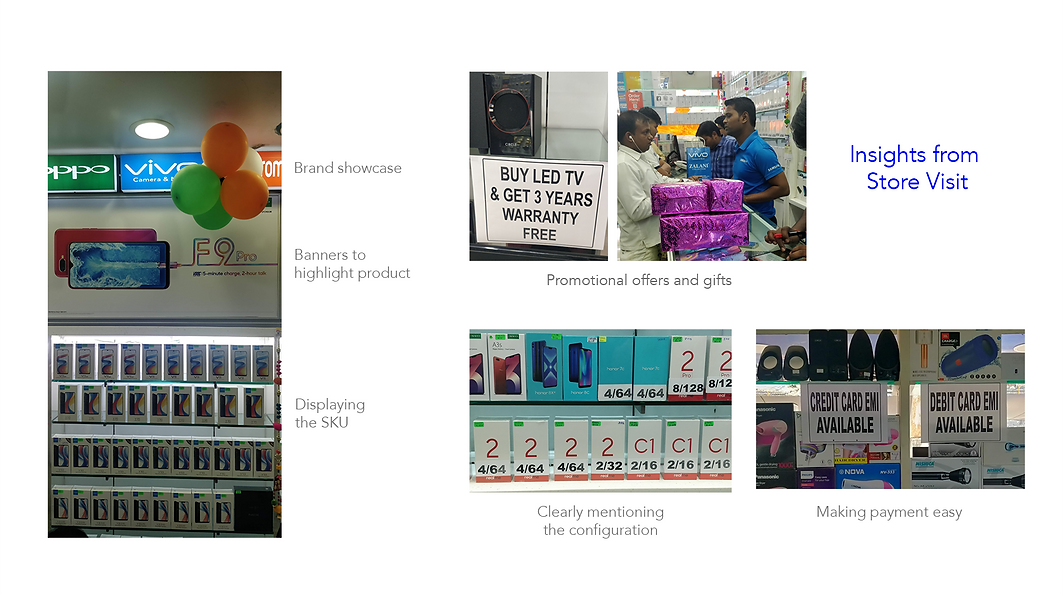
OBJECTIVE
To create India’s first EMI only e-commerce store which connects 43,000 sellers to over 30 million consumers in India and provides hassle-free financing options and loans with quick approvals.
DURATION
July 2018 - October 2019
ROLE
User Interface designer
TEAM
1 User Interface designer,
1 User Experience designer
BACKGROUND
Bajaj Finserv is a household name of trust and the oldest manufactures of automobiles, electronics and home appliances in India. The creation of an online store that reimagines traditional E-commerce with equated monthly installment (EMI) payment options for the users is what this project was at its core while offering a host of benefits to the consumers such as no documentation, pre-approved limit, and same-day delivery.
CHALLENGE
The challenge was to digitally transform the market, understand the target group and familiarise them with a new model of payment. The EMI store is the first of its kind store in India and extensive research was required for creating the user journeys

DESIGN OUTCOME
Simplified Onboarding
The registration process to get an EMI card that enables you to make purchases on the platform was a painstaking journey of going to a physical store, filling forms and submitting documents earlier. However, now the user can carry the entire procedure out digitally and book an appointment for document verification at her preferred location. This has helped greatly in expanding the user base and onboarding more users.
Dynamic Homepage
The homepage was designed using modular units which could be used for displaying the varied categories and reshuffled to accommodate seasonal content and sales. The homepage also highlighted the core propositions and benefits of the platform
New model of Payment
The prices for the products were not shown as a lumpsum figure but as the monthly EMI payment. The consumers further had an option to customize their payment plans and tenure according to their needs. The information about the pricing was included on all the different stages to provide maximum transparency




DESIGN PROCESS
Store Visits
We conducted in-store research at the local stores affiliated with the EMI network, browsing between different departments and observing customers. We documented and photographed any problems we encountered with the store environment, and also noted how the vendors had laid out the inventory and promoted offers

Preliminary sketches
After conducting workshops with the client to understand their business requirements, user interviews and benchmarking we started the brainstorming process by making quick sketches. These sketches helped us put our ideas on paper and make quick iterations

Wireframes
The next step was to create wireframes using the knowledge acquired in the earlier stage. We created the user journeys and discussed these with the client. This helped us in having a structure and all the important data points in place before moving on to the visual design stage

Visual design
The process of Visual design started with using the same wireframe and creating multiple design directions. We presented the client with the varied styles and understood which direction represented the brand best while being aesthetically & functionally transformative. Once this stage got over we created the UI designs tackling each journey one by one. During this process, we also created a design system that collated the typography, iconography, hierarchy, grids, CTAs, forms and other UI components.

Awards
This platform turned out to be a market innovator and my firm received “India’s best design project award” by INDIdesign and Pool magazine in 2019 for aiding digital transformation in India.

Learnings
This project has deepened my understanding of how an eCommerce operates and how effective design can boost sales and shape the customer experience. The principles of design and functionality don’t just make a visual difference but have both short & long term impact. We saw a significant increase in the engagement by something which might seem as little as changing the CTA color. Another key takeaway for me would be how to effectively communicate and present my point of view to the clients and stakeholders. Explaining the why instead of what seems to be the difference in how I put forward my ideas now.